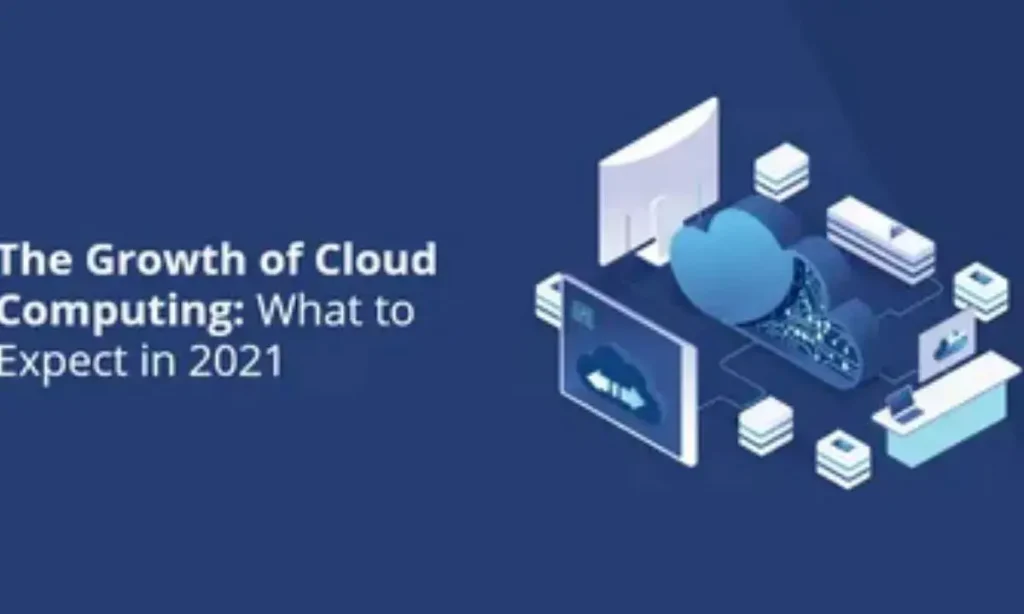In the fast-moving world of digital transformation, the Internet of Things (IoT) has grown from a tiny sprout of connected gadgets into a sprawling forest of data-driven systems. But as IoT ecosystems expand, so does the need for powerful, scalable cloud infrastructure. Much like nurturing a seed into a sequoia, mastering IoT growth and cloud scalability requires patience, planning, and a deep understanding of both technology and strategy.
This comprehensive guide walks you through the full lifecycle — from building your IoT foundation to managing enterprise-level scalability, while future-proofing your systems for the next decade.
Table of Contents
Building the Infrastructure for Growth
The backbone of every IoT ecosystem lies in its infrastructure — a seamless blend of hardware, connectivity, and cloud services that enable data to flow, process, and act in real time.
Core Components of IoT Infrastructure
An IoT system consists of several essential layers:
| Layer | Function | Examples |
|---|---|---|
| Devices & Sensors | Capture real-world data (temperature, motion, light) | Smart thermostats, GPS sensors |
| Connectivity | Transmit data securely | Wi-Fi, 5G, LoRaWAN, MQTT |
| Edge Computing | Process data locally for faster responses | NVIDIA Jetson, Azure IoT Edge |
| Cloud Platforms | Centralized storage, analytics, and orchestration | AWS IoT Core, Azure IoT Hub, Google Cloud IoT Core |
Each layer must be modular, secure, and scalable, ensuring the system can grow without disruption.
Cloud as the Growth Engine
IoT’s evolution would stall without cloud computing. The cloud enables dynamic scaling, elastic storage, and real-time analytics — all crucial for managing thousands (or millions) of connected devices.
Key cloud benefits for IoT growth:
- Scalability: Automatically allocate resources based on traffic or data load.
- Cost-efficiency: Pay only for what you use with on-demand compute instances.
- Flexibility: Integrate AI, ML, and automation directly through APIs.
- Global reach: Deploy IoT systems across regions with minimal latency.
Case Study: Tesla’s Cloud-Native Strategy
Tesla’s connected cars constantly upload telemetric data to the cloud. Using AWS and edge computing, Tesla analyzes millions of real-time data points for predictive maintenance and over-the-air updates — a textbook example of IoT scalability powered by the cloud.
Data Management and Security
IoT systems generate massive streams of data, often measured in terabytes per day. Managing this data requires well-defined pipelines:
- Ingestion: Stream data using Kafka or AWS Kinesis.
- Processing: Use Spark, Flink, or Google Dataflow for real-time analytics.
- Storage: Utilize time-series databases (InfluxDB, DynamoDB).
- Visualization: Dashboards via Grafana or Power BI.
Security remains a major concern. With billions of endpoints, each device is a potential vulnerability. Strong encryption (TLS 1.3), IAM (Identity and Access Management), and compliance with GDPR or HIPAA are non-negotiable.
Quote: “The Internet of Things is only as strong as its weakest connection.” — Felix Pembroke
Scaling Through Different Growth Phases
Just like a tree doesn’t reach full height overnight, IoT growth occurs in distinct phases. Understanding and managing each stage helps ensure sustainable scalability.
Phase 1: Prototype and Proof of Concept
At this early stage, companies focus on:
- Device connectivity testing
- Firmware stability
- Initial data transmission
- Cloud integration and API communication
Example:
A small agriculture startup deploys soil sensors to monitor moisture and nutrient levels. Initially, data is stored on a single AWS S3 bucket. As the number of sensors increases, they transition to a microservice-based model for better management.
Goal: Validate the system’s functionality before scaling.
Phase 2: Expansion and Integration
Once proof of concept succeeds, the challenge shifts to horizontal scaling — connecting more devices and integrating analytics.
Key activities:
- Deploying scalable data pipelines.
- Implementing IoT analytics for real-time insights.
- Introducing machine learning models for predictive maintenance.
Example:
A manufacturing company connects 50,000+ sensors on an Azure IoT Hub to detect early equipment failure. Predictive analytics helps reduce downtime by 30%.
Phase 3: Enterprise-Grade Maturity
At full maturity, the IoT ecosystem transitions into a multi-region enterprise system.
Critical elements:
- Auto-scaling clusters (Kubernetes, AWS Lambda).
- Global load balancing across data centers.
- Disaster recovery (DR) and redundancy architecture.
Case Study: Siemens Industrial IoT
Siemens uses its MindSphere platform, powered by AWS, to collect data from millions of industrial devices worldwide. Through this cloud-native model, Siemens performs real-time monitoring and AI-based optimization at scale.
Enterprise-Level IoT Operations
Running IoT at scale introduces operational complexity. Managing millions of devices requires automation, observability, and strict governance.
Operational Challenges
- Device lifecycle management and over-the-air updates.
- Maintaining network uptime across regions.
- Handling varying bandwidth demands.
- Ensuring compliance and data sovereignty.
Tip: Use device shadows and digital twins to monitor state changes across distributed networks.
Monitoring and Observability
You can’t manage what you can’t measure. Real-time monitoring is essential for uptime and reliability.
Recommended tools:
- Prometheus & Grafana: Metric collection and visualization.
- AWS CloudWatch / Azure Monitor: Centralized logs and performance metrics.
- Datadog: AI-powered anomaly detection and alerting.
AIOps (Artificial Intelligence for IT Operations) can predict failures before they occur by correlating patterns across telemetry data.
| Metric | Why It Matters | Tools |
|---|---|---|
| CPU & Memory Usage | Detect overload or inefficiency | CloudWatch, Grafana |
| Network Latency | Measure real-time responsiveness | Pingdom, Datadog |
| Device Uptime | Maintain SLA commitments | Prometheus |
| Error Rates | Identify integration issues | Kibana, ELK Stack |
Governance and Compliance
As IoT grows globally, regulatory frameworks shape how data is collected, stored, and transferred.
Key considerations:
- GDPR (Europe) — Personal data protection.
- CCPA (California) — Consumer data transparency.
- ISO/IEC 27001 — Information security management.
Implement audit trails, multi-factor authentication, and role-based access control (RBAC) to maintain system integrity.
Technical Considerations for Future Growth
IoT scalability isn’t static — it must evolve with emerging technologies and sustainability goals.
Emerging Technologies Fueling IoT Scalability
- Edge AI & Federated Learning:
AI models are moving closer to devices, reducing latency and preserving data privacy.
Example: Smart cameras analyzing data locally before syncing with the cloud. - Quantum-Safe Encryption:
As quantum computing advances, IoT security must prepare for new encryption standards. - 6G & Satellite IoT:
With global low-latency connectivity, IoT will reach even remote regions and oceans.
Sustainability and Green Cloud
Cloud scalability isn’t only about performance — it’s about sustainability too.
Data centers consume over 1% of global electricity, so optimizing IoT infrastructure for energy efficiency is critical.
Green IoT strategies:
- Carbon-aware load balancing: Direct workloads to low-carbon regions.
- Serverless architecture: Reduce idle compute time.
- Renewable energy data centers: Companies like Google and Microsoft lead this transition.
Example:
Google’s carbon-free cloud initiative aims to operate entirely on renewable energy by 2030, influencing IoT sustainability standards worldwide.
Architecture for 2030 and Beyond
The future of IoT is autonomous, decentralized, and intelligent.
Predicted developments:
- Blockchain-integrated IoT for device authentication and transaction verification.
- Digital twins to simulate complex physical environments.
- AI-driven orchestration to self-scale resources dynamically.
Insight: “Tomorrow’s IoT will be self-healing, self-scaling, and self-optimizing — a living network that grows smarter over time.”
Post This World, Better This Cosmos: A New Vision
Beyond the buzzwords, IoT and cloud scalability are shaping a new digital cosmos — one where connectivity, intelligence, and sustainability coexist.
IoT for Humanity and Sustainability
- Smart cities optimizing energy and traffic.
- Precision agriculture reducing water waste.
- Wearable IoT improving healthcare outcomes.
Creating a Connected Future
When IoT, AI, and the cloud converge responsibly, we don’t just build smarter devices — we build a smarter planet.
This is where the true vision lies: a world where technology nurtures ecosystems, enhances human life, and betters the cosmos.
Conclusion: Planting Seeds for the Future
Mastering IoT growth and cloud scalability isn’t about adding more servers or devices — it’s about designing systems that adapt, evolve, and sustain. From the first sprout of a startup idea to the sequoia of enterprise innovation, the journey is fueled by strategic infrastructure, agile scaling, and ethical technology use.
The future of IoT belongs to those who combine technical excellence with visionary thinking.
About the Author
Felix Pembroke is a cloud infrastructure strategist and IoT architect with over 15 years of experience in IoT scalability, cloud-native systems, and digital transformation. He helps enterprises design scalable, secure, and sustainable IoT ecosystems. Felix contributes regularly to publications on cloud computing, AI operations, and edge architecture.



